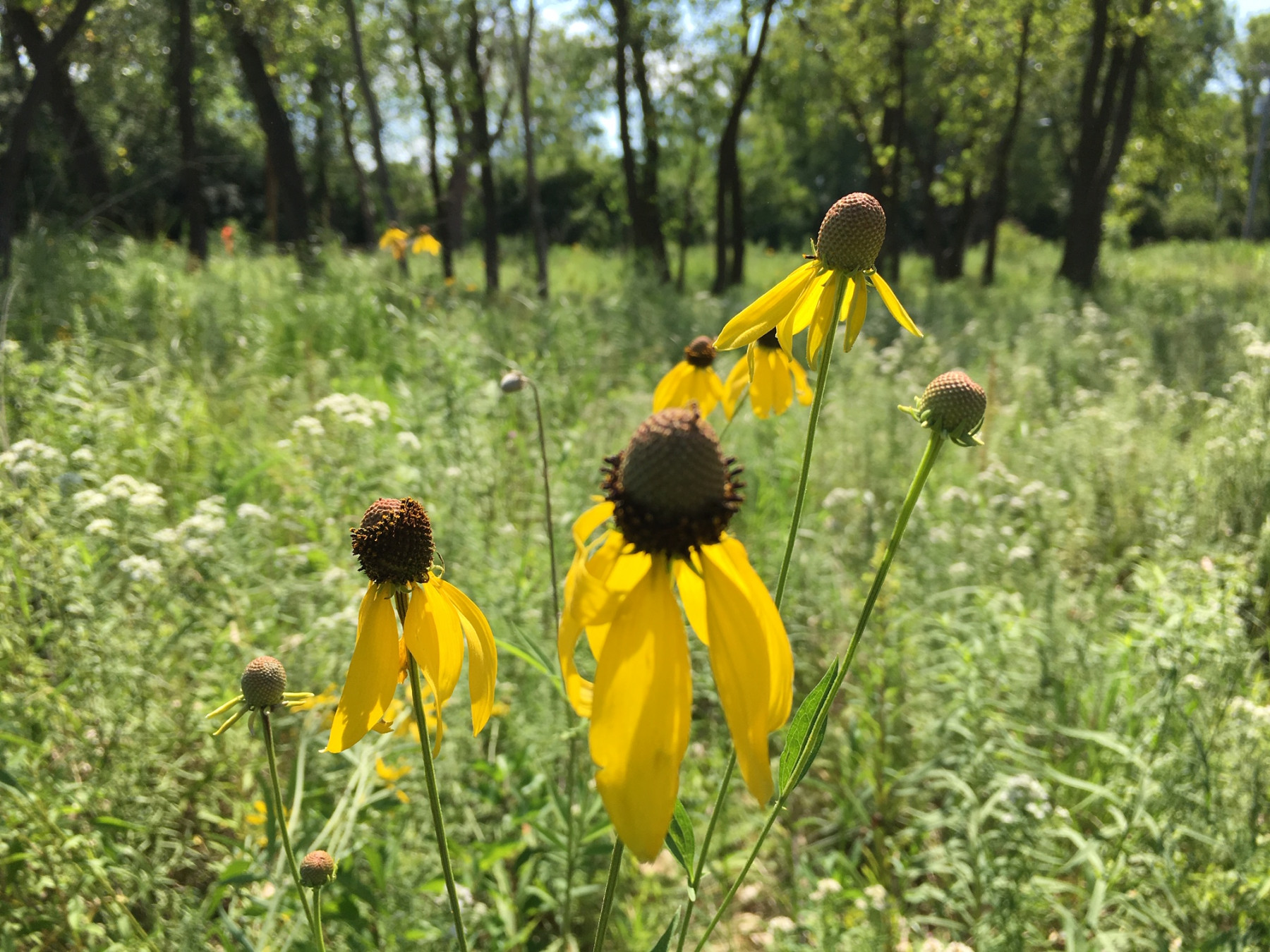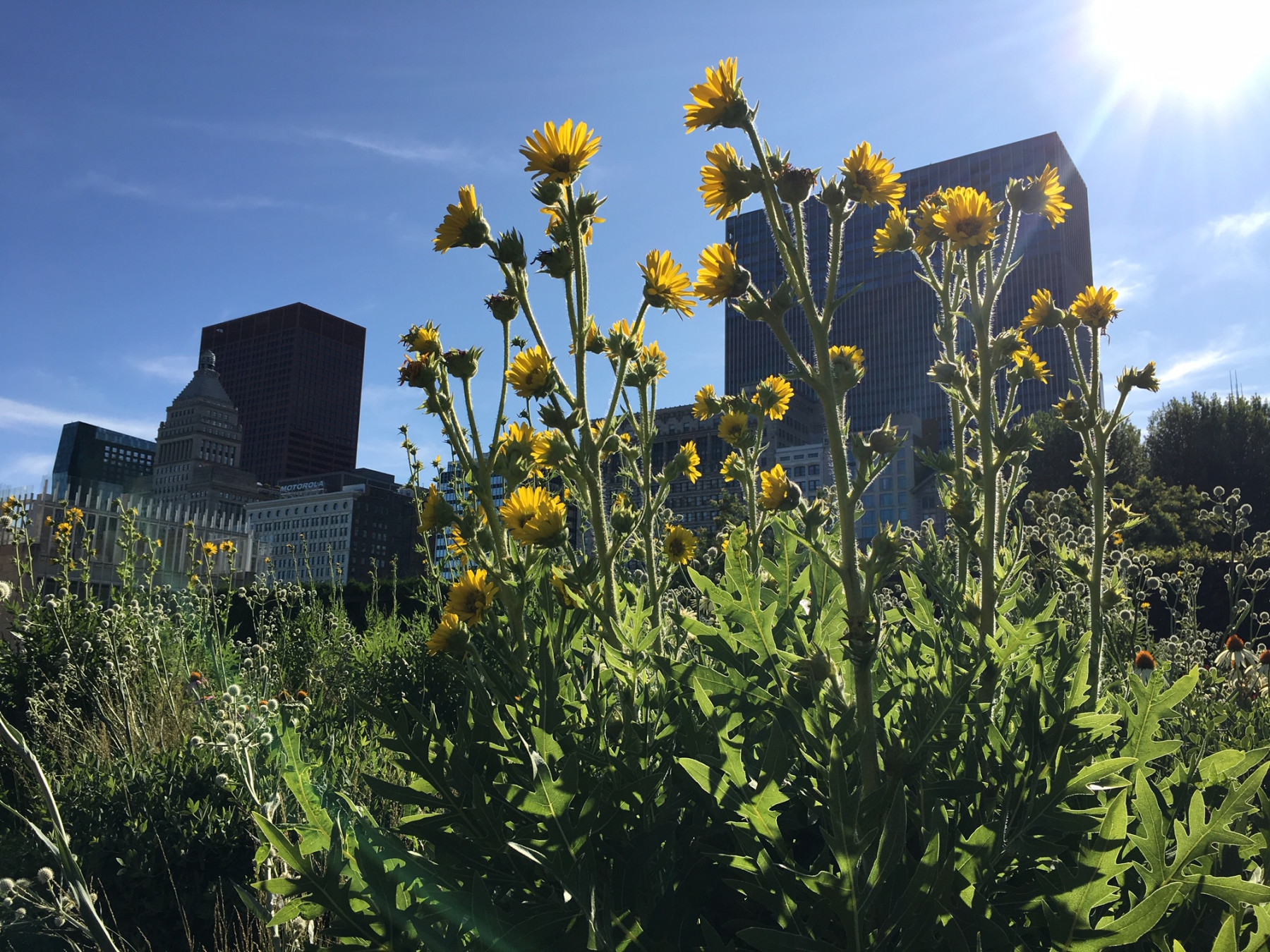
The other day I strolled along a path between plants as tall as my shoulders, like a sea of green grasses with colorful swells of yellow coneflowers and black-eyed Susans, white ironweed and Indian plaintain, purple milkweed, and orange butterfly weed. Butterflies twinkled–monarchs, painted ladies, swallowtails—and bumblebees plodded from flower to flower. On the marsh at the end of the path floated a pair of wild swans. From a high branch of a cottonwood tree, a red-tailed hawk watched.
It felt like I’ve always imagined the marsh-and-prairie landscape of my native Chicago 300 years ago, before the first settlers arrived with their axes and plows. Yet I was in a city of Chicago park, Indian Ridge Marsh. What’s more remarkable, this prairie and wetland habitat is being restored and developed next to a towering landfill, between two busy freight railroad tracks, on a scrap of land formerly used to dump slag, the rocky byproduct of steelmaking.
Less than 1 percent of the original prairie remains in my state of Illinois. Most of us have never seen and can’t really imagine the real tallgrass prairie, the wind-whipped ocean of head-high grass and flowers that amazed the first Europeans who saw it in the 17th century and frightened them with its vastness and apparent emptiness.
Boy, were they wrong. The prairie was one of the richest ecological communities on earth, a complex metropolis of plants with deep roots that created some of the world’s richest soil, supporting insects, birds, amphibians, and mammals from seven-lined ground squirrels all the way up to bison.
Now, all over the city and the surrounding region, people are doing their best to bring back at least a bit of the prairie. On scraps of old industrial land, in former corn and soybean fields, along railroad rights of way and underneath power lines, by sandy beaches built on landfill at the edge of Lake Michigan, on parkland that 50 years ago was another boring patch of weedy lawn, in vacant lots in troubled neighborhoods, they’re fighting back the weeds, scattering seeds of grasses and tall prairie flowers, waiting for them to sprout and grow, and watching the birds and butterflies come back to find them.
As at Indian Ridge Marsh, all these prairie restorations are communities of people as well as plants. They happen because nonprofits, government agencies, volunteers, and landowners decide to work together to bring back whatever they can of the habitat that has been lost to 200 years of development. It’s not easy: Ecological restoration has been described as “gardening at a landscape scale,” and most of the work is weeding.

Can you really restore the richness and complexity of a true tallgrass prairie on a former slag dump? Probably not. But you can create a home for a lot of butterflies, bees, and migrating birds, and a spiritual home for people. There’s even a hint of prairie in my garden: I brought home a couple of butterfly weed plants (Asclepias tuberosa) from Indian Ridge and planted them out back.
These prairie restorations embody so much of what I love about my city: the persistence of nature against all odds, the resilience, the toughness, the willingness to roll up our sleeves and work together to make something improbable happen, the imagination to see hope in battered, anguished neighborhoods and prairies in landfills.
A few days earlier, as part of a Chicago convention of the Perennial Plant Association, I visited the Lurie Garden in downtown Chicago, a three-acre sweep of naturalistic garden on the rooftop of a parking garage in the midst of skyscrapers. The famed Dutch plantsman Piet Oudolf, who later planted the High Line in New York, found much of his inspiration for the Lurie Garden in the prairie and used many native plants.
The garden is a dazzler, filled with wildlife, and I always enjoy visiting. But I love it most as a bit of the prairie I can see taking shape: Not a vast ocean of prairie, but hundreds of tenacious, scabby, imperfect little restorations that, together, can support monarch butterflies, red-tailed hawks, and communities.


